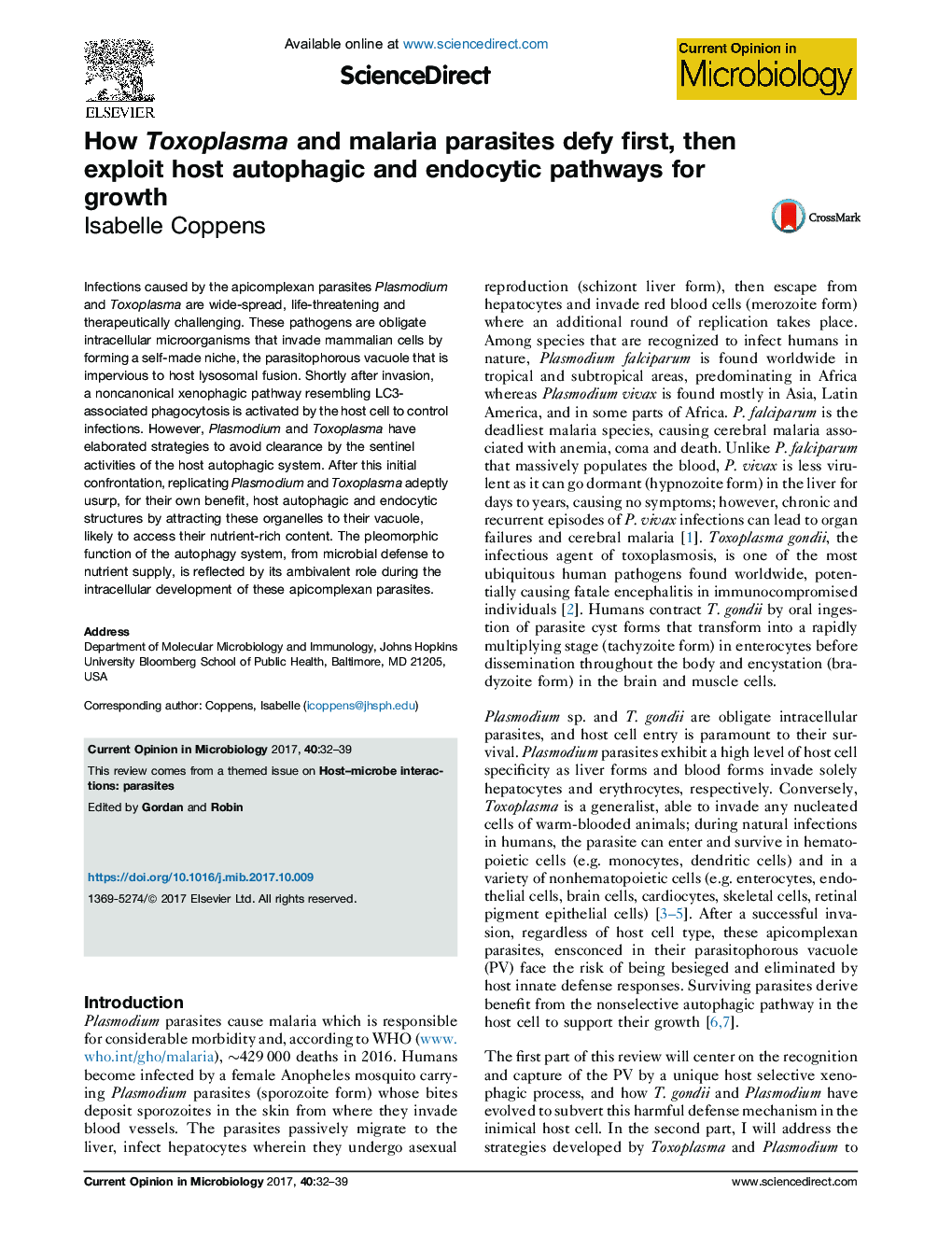| کد مقاله | کد نشریه | سال انتشار | مقاله انگلیسی | نسخه تمام متن |
|---|---|---|---|---|
| 8745123 | 1593029 | 2017 | 8 صفحه PDF | دانلود رایگان |
عنوان انگلیسی مقاله ISI
How Toxoplasma and malaria parasites defy first, then exploit host autophagic and endocytic pathways for growth
ترجمه فارسی عنوان
چگونه انگل توکسوپلاسما و انگل مالاریا ابتدا از آن دفاع می کنند، و سپس مسیرهای اتوفاتیک و اندوسیتیک میزبان را برای رشد می کنند
دانلود مقاله + سفارش ترجمه
دانلود مقاله ISI انگلیسی
رایگان برای ایرانیان
موضوعات مرتبط
علوم زیستی و بیوفناوری
ایمنی شناسی و میکروب شناسی
میکروب شناسی
چکیده انگلیسی
Infections caused by the apicomplexan parasites Plasmodium and Toxoplasma are wide-spread, life-threatening and therapeutically challenging. These pathogens are obligate intracellular microorganisms that invade mammalian cells by forming a self-made niche, the parasitophorous vacuole that is impervious to host lysosomal fusion. Shortly after invasion, a noncanonical xenophagic pathway resembling LC3-associated phagocytosis is activated by the host cell to control infections. However, Plasmodium and Toxoplasma have elaborated strategies to avoid clearance by the sentinel activities of the host autophagic system. After this initial confrontation, replicating Plasmodium and Toxoplasma adeptly usurp, for their own benefit, host autophagic and endocytic structures by attracting these organelles to their vacuole, likely to access their nutrient-rich content. The pleomorphic function of the autophagy system, from microbial defense to nutrient supply, is reflected by its ambivalent role during the intracellular development of these apicomplexan parasites.
ناشر
Database: Elsevier - ScienceDirect (ساینس دایرکت)
Journal: Current Opinion in Microbiology - Volume 40, December 2017, Pages 32-39
Journal: Current Opinion in Microbiology - Volume 40, December 2017, Pages 32-39
نویسندگان
Isabelle Coppens,
